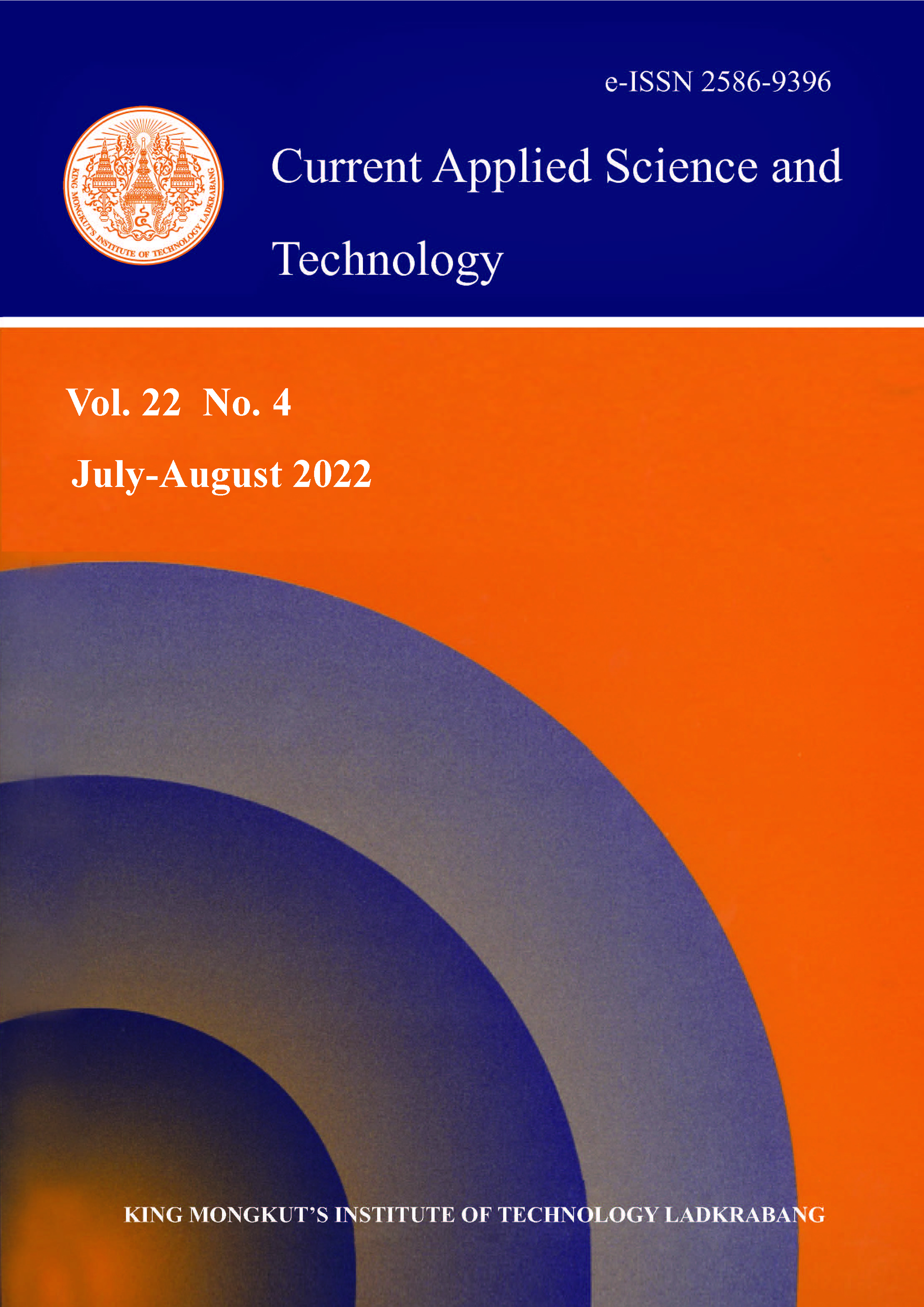Nanoporous Carbon from Water Hyacinth via Hydrothermal Carbonization assisted Chemical Activation for Dye adsorption
Main Article Content
Abstract
Nanoporous carbon was successfully prepared by hydrothermal carbonization with chemical activation using water hyacinth as a raw material. The porous carbon was produced for the adsorption of methylene blue (MB), which is an organic pollutant in wastewater from several industries. The effect of various parameters such as pH, dye concentration and adsorption period time on dye removal were studied. The highest removal efficiency of MB obtained using WH nanoporous carbon was approximately 96.8-99.9% within an adsorption time between 10 and 30 min. The dye removal capacity increased with increasing of period time during the adsorption test. Moreover, the adsorption kinetics of MB during adsorption process was explained by the Langmuir and Freundlich adsorption isotherms.
Keywords: nanoporous carbon; hydrothermal carbonization; adsorption capacity; methylene blue adsorption; Freundlich Isotherm
*Corresponding author: Tel.: (+66) 897815665 Fax: (+66) 23298265
E-mail: apiluck.ei@kmitl.ac.th
Article Details

This work is licensed under a Creative Commons Attribution-NonCommercial-NoDerivatives 4.0 International License.
Copyright Transfer Statement
The copyright of this article is transferred to Current Applied Science and Technology journal with effect if and when the article is accepted for publication. The copyright transfer covers the exclusive right to reproduce and distribute the article, including reprints, translations, photographic reproductions, electronic form (offline, online) or any other reproductions of similar nature.
The author warrants that this contribution is original and that he/she has full power to make this grant. The author signs for and accepts responsibility for releasing this material on behalf of any and all co-authors.
Here is the link for download: Copyright transfer form.pdf
References
Yao, Y., Wang, L., Sun, L., Zhu, S., Huang, Z., Mao, Y., Lu, W. and Chen, W., 2013. Efficient removal of dyes using heterogeneous Fenton catalysts based on activated carbon fibers with enhanced activity. Chemical Engineering Science, 101, 424-431.
Sathishkumar, P., Arulkumar, M. and Palvannan, T., 2012. Utilization of agro-industrial waste Jatropha curcas pods as an activated carbon for the adsorption of reactive dye Remazol Brilliant Blue R (RBBR). Journal of Cleaner Production, 22, 67-75.
Sayğılı, H. and Güzel, F., 2016. High surface area mesoporous activated carbon from tomato processing solid waste by zinc chloride activation: process optimization, characterization and dyes adsorption. Journal of Cleaner Production, 113, 995-1004.
Islam, M.A., Tan, I.A.W., Benhouria, A., Asif, M. and Hameed, B.H., 2015. Mesoporous and adsorptive properties of palm date seed activated carbon prepared via sequential hydrothermal carbonization and sodium hydroxide activation. Chemical Engineering Journal, 270, 187-195.
Köseoğlu, E. and Akmil-Başar, C., 2015. Preparation, structural evaluation and adsorptive properties of activated carbon from agricultural waste biomass. Advanced Powder Technology, 26, 811-818.
Lam, S.S., Liew, R.K., Wong, Y.M., Yek, P.N.Y., Ma, N.L., Lee, C.L. and Chase, H.A., 2017. Microwave-assisted pyrolysis with chemical activation, an innovative method to convert orange peel into activated carbon with improved properties as dye adsorbent. Journal of Cleaner Production, 162, 1376-1387.
Liu, H., Chen, Y., Yang, H., Gentili, F. G., Söderlind, U., Wang, X., Zhang, W. and Chen, H., 2019. Hydrothermal carbonization of natural microalgae containing a high ash content. Fuel, 249, 441-448.
Yakout, S.M. and El-Deen, G.S., 2016. Characterization of activated carbon prepared by phosphoric acid activation of olive stones. Arabian Journal of Chemistry, 9, S1155-S1162.
Saucier, C., Adebayo, M.A., Lima, E.C., Cataluna, R., Thue, P.S., Prola, L.D.T., Puchana-Rosero, M.J., Machado, F.M., Pavan, F.A. and Dotto, G.L., 2015. Microwave-assisted activated carbon from cocoa shell as adsorbent for removal of sodium diclofenac and nimesulide from aqueous effluents. Journal of Hazardous Materials, 289, 18-27.
Li, S., Han, K., Li, J., Li, M. and Lu, C., 2017. Preparation and characterization of super activated carbon produced from gulfweed by KOH activation. Microporous and Mesoporous Materials, 243, 291-300.
Abioye, A.M. and Ani, F.N., 2017. Advancement in the production of activated carbon from biomass using microwave heating, Jurnal Teknologi, 79(3), https://doi.org/10.11113/jt.v79.7249.
Olcese, R., Bettahar, M.M., Malaman, B., Ghanbaja, J., Tibavizco, L., Petitjean, D. and Dufour, A., 2013. Gas-phase hydrodeoxygenation of guaiacol over iron-based catalysts. Effect of gases composition, iron load and supports (silica and activated carbon). Applied Catalysis B: Environmental, 129, 528-538.






